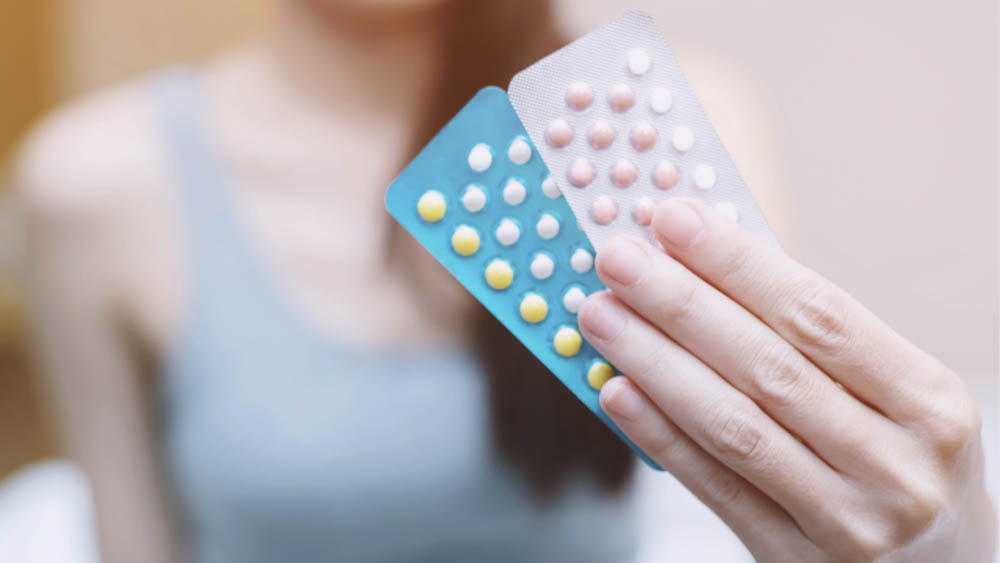Balancing Act: Excess Estrogen Production
and Xenoestrogens
GET DIAGNOSED
Share on facebook
Facebook
Share on twitter
Twitter
Share on linkedin
LinkedIn
Did you know that pricy, dream cream you slather on your skin every day that promises to turn back the hands of time can be potentially harmful to your health? The more you know…
When your hormones are in harmony, overall health prevails. Your energy is humming. You sleep soundly. Your skin glows. You’re always in a great mood. Life just seems to “click.” Conversely, when your hormones are out of whack, they can wreak immeasurable havoc on your health, your outlook, your skin, your sleep, etc. Balanced hormones are not only vital for reproductive purposes. They play a significant role in nearly all our body’s physiological processes, including heart, bone, and brain health. Just as dangerously low levels of a hormone can contribute to adverse physiological effects, so, too, can excessive levels of a hormone(s). Excessive estrogen, also known as estrogen dominance, can lead to:
- Mood swings
- Weight gain
- Hair loss
- Headaches/migraines
- Anxiety/panic attacks
- Development of abnormal cells on the cervix
- Bloating
- Depression
- Risk of uterine cancer
- Breast tenderness
- Risk of hypothyroidism
- Low libido
Xenoestrogens and Their Link to Estrogen Dominance
Overexposure to environmental estrogen, xenoestrogens, is the most common way of developing excessive estrogen in the body. Xenoestrogens are “imposter” estrogens and are highly toxic to the body. Xenoestrogens are typically found in seemingly unassuming, everyday items that can detrimentally impact our endocrine system, completely throwing our hormone production out of balance and disproportionately affecting the healthy function of the symphony of our hormones in general. Xenoestrogens can be found in:
- Pesticides/ herbicides
- Animal meats that were fed synthetic hormones
- Cosmetics/personal care products that contain parabens
- Sunscreen products containing 4-methylbenzylidene camphor (4-MBC)
- Plastic bottles/containers/products
- Household cleaning products
- Some tap waters
Because these foreign estrogens possess a molecular makeup so strikingly similar to that of natural estrogens, they have the capacity of binding to estrogen receptor sites, which could have potentially harmful outcomes. (Source: https://www.sciencedirect.com/topics/neuroscience/xenoestrogen)
Ways to Effectively Reduce Xenoestrogens in the Body
Thankfully, there are ways to significantly reduce the harmful xenoestrogen supply that may currently be lurking in your body. Here are some effective ways to get your body back in its natural, healthy state of harmony:
- Drink fresh, filtered water to flush toxins and other unwelcome substances
- Move more – incorporate low to moderate exercise into your daily routine
- Munch on whole foods and avoid chemical-laden, processed foods
- Take a probiotic to support healthy gut bacteria
- Pile plate with cruciferous veggies, such as broccoli, kale, Brussel sprouts
- Use BPA-free bottles to store fresh water while on-the-go (BPA is bisphenol A – a toxic, industrial chemical commonly found in many plastic products)
How to Avoid Contact with Xenoestrogens
Patients are advised taking on the role of label sleuth before slathering on that next celeb-coveted eye cream or Instagram influencer-obsessed foundation. Some of the most popular, high-end skincare/personal products and beloved beauty brands are teeming with endocrine-disrupting parabens that pose an alarming risk to reproductive health and healthy hormonal balance. Get used to reading food labels and deciphering dubious-sounding ingredients. Knowing what you put INTO your body is just as important as what you’re putting ONTO your body. Reducing or completely avoiding products with questionable ingredients in conjunction to having your hormone levels regularly monitored/managed will help your body achieve a healthy, harmonious, beautiful balance for the long-term.
References:
Sam De Coster, Nicolas van Larebeke. Endocrine-Disrupting Chemicals: Associated Disorders and Mechanisms of Action. Journal of Environmental and Public Health. 6 September, 2012.
Smith, P.W. (2010). What You Must Know About Women’s hormones: Your Guide to Natural Hormone Treatments for PMS, Menopause, Osteoporosis, PCOS, and More. Square One.
If you feel you may benefit from lipedema revision surgery and would like to book a consultation with Dr. Jamie Schwartz to evaluate your current physical situation, as well as your medical and lipedema surgical history, be sure to contact our office to speak with any one of our compassionate, highly-knowledgeable staff members. We look forward to hearing from you and we’re always here to help.

